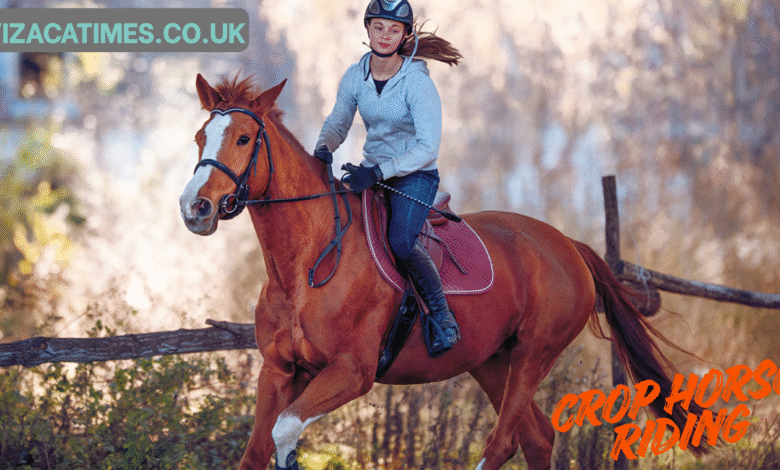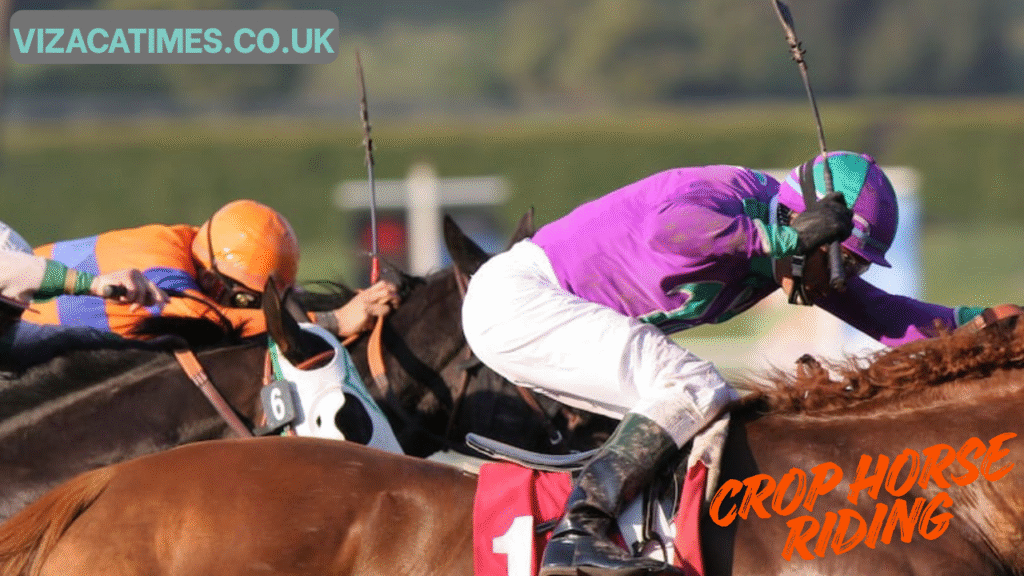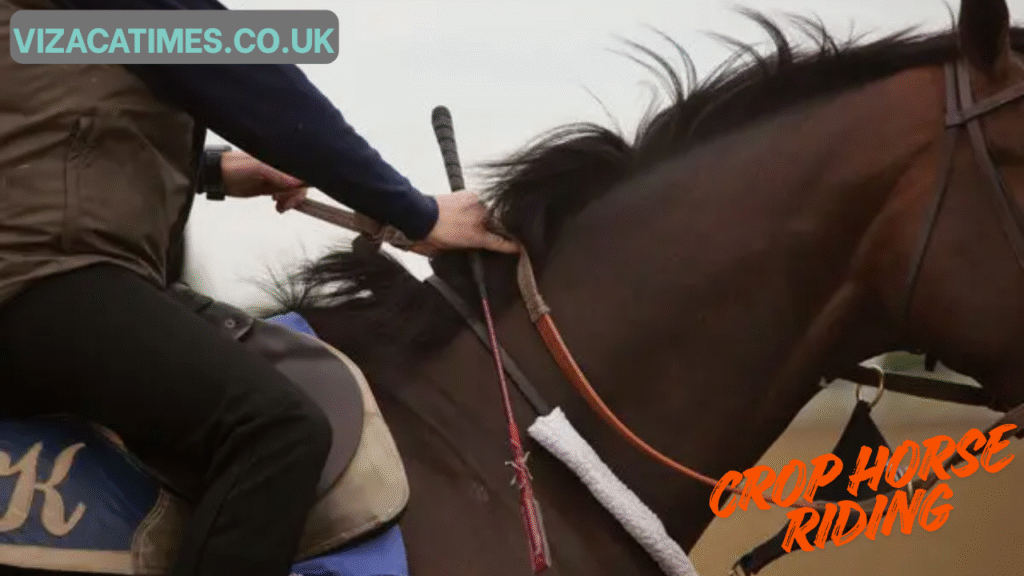Crop Horse Riding: The Art, Technique, and Ethics Behind Equestrian Mastery

Understanding the Concept of Crop Horse Riding
Crop horse riding is an essential aspect of equestrian training and competition that combines control, precision, and communication between the rider and the horse. The term “crop” refers to a short whip or riding aid that riders use to signal or reinforce commands during training or performance. Far from being a tool of force, the crop, when used properly, serves as a subtle extension of the rider’s hand — a means to communicate discipline, encouragement, and guidance.
Crop horse riding emphasizes balance, timing, and understanding between human and animal. It reflects a tradition that spans centuries, where riders and horses work together in harmony to achieve grace, strength, and speed.
The History and Evolution of Crop Use in Horse Riding

The use of crops in horse riding dates back to ancient civilizations where horses were essential for transportation, warfare, and sport. Early riders used simple leather straps or sticks to encourage their horses during long journeys or competitions. Over time, these tools evolved into refined riding crops, crafted with lightweight materials and ergonomic handles for better control.
In modern equestrianism, crops are used across various disciplines — from dressage and show jumping to eventing and general riding. Each discipline adopts its own rules regarding crop use, ensuring that the focus remains on ethical training and performance enhancement rather than punishment.
Components of a Riding Crop
A standard riding crop is a compact and carefully designed piece of equipment made up of three main parts:
- The Handle: Provides grip and control for the rider. It’s often wrapped in leather or rubber for stability.
- The Shaft: The flexible, central portion of the crop that allows for precision and responsiveness.
- The Keeper or Slapper: The thin, flattened end used to make contact with the horse, producing sound and light stimulation rather than pain.
The design and length of the crop depend on the equestrian discipline and the rider’s personal preference.
Proper Technique in Crop Horse Riding
Crop horse riding requires skill, sensitivity, and timing. The rider’s goal is not to intimidate the horse but to enhance communication and reinforce leg or hand cues. When used correctly, a crop can improve a horse’s responsiveness and maintain rhythm during riding exercises.
The proper technique involves:
- Positioning: The crop is typically held in the rider’s dominant hand, with the thumb securing it firmly.
- Cue Timing: The crop should be applied immediately after a verbal or leg cue to reinforce the message.
- Gentle Reinforcement: A light tap on the horse’s shoulder or hindquarters is often enough to draw attention or encourage movement.
Instructors emphasize that the crop should never replace skill or patience. It is a supporting aid, not a controlling weapon.
Common Misconceptions About Riding Crops
One of the biggest misconceptions about crop horse riding is that it involves cruelty or excessive discipline. In reality, ethical equestrians prioritize their horse’s comfort and emotional well-being. The crop is not a punishment tool but a communication aid.
Professional riders and trainers are trained to use the crop responsibly — applying it sparingly and never out of frustration. In competitive sports, judges and stewards carefully monitor crop use, ensuring compliance with humane standards set by organizations like the FEI (Fédération Équestre Internationale).
The Role of Crop Horse Riding in Training and Competition
In training, a crop helps refine a horse’s obedience and focus. For example, in dressage, it can reinforce engagement in specific movements; in show jumping, it encourages forward momentum and confidence during approaches.
During competition, the crop serves as an extension of the rider’s cues, helping maintain performance precision. However, each event has strict rules on crop use — including maximum allowed strikes and specific application areas. Excessive or inappropriate use can result in penalties or disqualification.
Ethical Considerations in Crop Horse Riding

Ethics play a vital role in the modern understanding of crop horse riding. Equestrian communities worldwide advocate for humane practices that respect the animal’s dignity and comfort. The following principles guide responsible use:
- Empathy: Understanding the horse’s physical and emotional thresholds.
- Education: Continuous learning about equine behavior and communication.
- Moderation: Using the crop only when absolutely necessary and with proper intent.
Organizations and trainers increasingly emphasize positive reinforcement and gentle training methods, reducing dependence on traditional aids.
The Psychology of Communication Between Rider and Horse
Horses are intelligent, sensitive animals capable of reading human emotions and body language. Crop horse riding, therefore, is not just about physical commands but also about building trust.
The crop acts as a secondary signal, but the rider’s tone, posture, and energy play the most significant roles in shaping a horse’s response. A confident, calm rider fosters a cooperative and willing horse, while tension or aggression can lead to resistance.
This dynamic highlights the beauty of equestrian sports — they require both technical mastery and emotional intelligence.
Crop Horse Riding in Different Equestrian Disciplines
Each equestrian discipline utilizes crops differently:
- Dressage: Used sparingly to encourage impulsion and attention to subtle cues.
- Show Jumping: Assists in maintaining rhythm and forward momentum before fences.
- Eventing: Used during cross-country for focus and quick response.
- Racing: Short crops are used with strict limitations for balance and signaling, not force.
Across all these, regulatory bodies maintain high standards for welfare and fairness, emphasizing respect for the animal.
Equipment Maintenance and Care
Proper maintenance of the crop ensures longevity and reliability. Riders should:
- Keep the crop clean and dry after each use.
- Avoid excessive bending to preserve flexibility.
- Store it in a cool, dry place away from direct sunlight.
High-quality crops can last for years with proper care, making them both functional and symbolic of the rider’s dedication.
Modern Innovations in Crop Design
With growing awareness of animal welfare, modern crop designs incorporate features that reduce discomfort and improve communication. Some use soft synthetic materials, ergonomic grips, and vibration-dampening shafts for more refined control.
Manufacturers now design “gentle crops” that prioritize humane use, ensuring riders can maintain effective communication without compromising ethics.
Building a Bond Through Responsible Riding
Crop horse riding is ultimately about partnership. The bond between rider and horse grows through trust, repetition, and understanding. When the crop is used ethically, it becomes an instrument of cooperation rather than control.
Responsible riders recognize that success in equestrian sports depends not on dominance but on harmony. The best performances come from mutual respect, where both rider and horse work as one.
The Future of Crop Horse Riding

The future of crop horse riding lies in continued education, research, and technological advancement. As riders, trainers, and governing bodies collaborate, equestrianism is moving toward an even more humane and transparent era.
Training methods that combine science, empathy, and innovation will define the next generation of riders — ensuring that crops are used responsibly, ethically, and effectively.
Conclusion
Crop horse riding is a discipline rooted in communication, respect, and control. It showcases the artistry and athleticism of both horse and rider, emphasizing precision over power. When practiced with empathy and understanding, it becomes a symbol of trust — a dance of rhythm and mutual respect that has defined equestrian culture for centuries.
Through continued awareness and ethical refinement, crop horse riding will remain not only a vital part of equestrian tradition but also a testament to humanity’s evolving relationship with animals.
Also Read : Colorado Buffaloes Football vs Texas Tech Red Raiders Football Match Player Stats – Full Game Analysis



